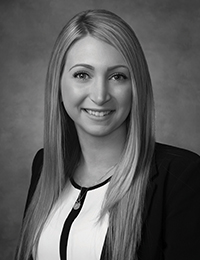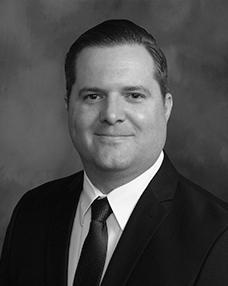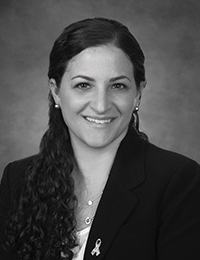Let’s Clear Up 10 Misconceptions About HSAs
When it comes to the versatile health savings account, misunderstandings abound.
Health savings accounts (HSAs) are powerful savings vehicles that can encourage Americans to save for future healthcare expenses. These accounts are triple tax advantaged:
- Upfront tax deduction. Contributions reduce your taxable income in the year you make them.
- Assets grow tax free. The funds can be invested and grow over time, tax free.
- Tax-free withdrawals. Qualified distributions are tax free.
Bonus: Your employer may also contribute on your behalf.
Plus, the money can be used to pay for a variety of qualified expenses, including co-insurance, deductibles, dental and vision care, prescriptions and many other items. HSAs aren’t for everyone, but for those who can benefit most, they do more than help keep your taxes in good shape.
In 2022, you can contribute up to $3,650 for self-only coverage or $7,300 for family coverage.
Read on to debunk some of the misconceptions around what HSAs can and can’t do to help you and your family plan for a healthy future.
Myth 1: Use it or lose it.
You might be thinking of FSAs (flexible spending accounts), which are also funded with pre-tax dollars and can pay for certain qualified expenses. With FSAs, you typically get a year to spend your funds or forfeit that money. But with HSAs, funds roll over year after year, making them ideal for tax-efficient savings.
Plus, the money is yours even if you leave your job. Simply transfer the funds to another custodian. Talk with your advisor and accountant first about rules and limits.
Myth 2: HSAs are only for wealthy, older people.
HSAs benefit just about everyone, and enrollment is relatively equal across age groups. The misconception may have arisen because HSAs are associated with high-deductible health plans, which means you pay a certain amount out of pocket before insurance kicks in.
Myth 3: Reimbursements must happen in the year the expense occurred.
Not unless the law changes. Currently, you can wait years to request reimbursement for a qualified medical expense. You do have to hold on to the relevant receipts and documentation, however.
Myth 4: You can’t pay premiums using HSA funds.
That’s true for regular health insurance, unless you’re receiving unemployment benefits. But it’s not true for long-term care premiums, which are considered a qualified expense (up to the established age-based IRS limits). Keep in mind, once you’re enrolled in Medicare, you can no longer contribute to an HSA, but you can use the funds for Medicare and Medigap premiums. You can also use the money to pay for COBRA premiums should you need to.
Myth 5: It’s the same as a savings account.
Your HSA funds may earn interest like your savings account, but if they do, it isn’t taxable. Even better? Many HSAs allow the money to be invested in bank accounts, money markets, stocks and mutual funds.
Some accountholders even choose to pay current medical expenses out of pocket to allow the HSA balance to grow tax free for as long as possible and use the funds for retirement health needs.
Please note that all investments are subject to risk, including loss.
Myth 6: Withdrawals are tax free.
Qualifying withdrawals are tax free. But nonqualified withdrawals are taxable as ordinary income AND subject to a 20% penalty unless you’re: a) over 65, b) disabled or c) a non-spouse beneficiary who makes a withdrawal after the passing of the original accountholder.
Myth 7: Heirs inherit HSAs tax free.
Not exactly. If you name your spouse as beneficiary, it’ll retain its preferential tax treatment when it changes hands. However, if you name someone other than a spouse, the account will cease to be an HSA upon your death, and the heir will have to pay taxes on it.
Myth 8: You can’t contribute on behalf of someone else.
If the recipient is enrolled in a high deductible health plan, you can contribute to their HSA on their behalf (up to the annual limit), and they can deduct the contribution on their tax return. Two gifts in one! Bonus: the contributions are “above the line” deductions so they apply whether the person itemizes or not.
Myth 9: HSAs are basically IRAs.
HSAs can actually act like super IRAs. For example, HSAs allow employer contributions. IRAs don’t. HSAs don’t require minimum distributions. IRAs do. And if you don’t need the funds for healthcare expenses, you can use your HSA money as an advanced-age traditional IRA after age 65 (IRAs allow withdrawals at 59 1/2) without penalty, though you’ll have to pay income tax on the funds.
Myth 10: Your out-of-pocket costs will be the same.
They might be, averaged over a year. But switching to an HSA can come with sticker shock. You’re responsible for all costs until you meet your high deductible, meaning you may pay considerably more for doctor’s visits or prescriptions before your insurance benefits take over. That’s the main reason HSAs were given preferential tax treatment. They’re intended to help you boost your savings to cover a higher deductible before your insurance benefits take effect.
Ask your advisor whether an HSA could help benefit your health and wealth.
Sources: healthcare.gov; nerdwallet.com; paychex.com; AHIP.org’s “Health Savings Accounts and High Deductible Health Plans Grow as Valuable Financial Planning Tools,” April 2018
Raymond James and its advisors do not offer tax advice. You should discuss any tax matters with the appropriate professional.
Contributions to a traditional IRA may be tax deductible depending on the taxpayer's income, tax filing status and other factors. Withdrawal of pre-tax contributions and/or earnings will be subject to ordinary income tax and, if taken prior to age 59 1/2, may be subject to a 10% federal tax penalty.
Investment products are: not deposits, not FDIC/NCUA insured, not insured by any government agency, not bank guaranteed, subject to risk and may lose value. Raymond James financial advisors do not render legal or tax advice. Please consult a qualified professional regarding legal or tax advice.
All expressions of opinion reflect the judgment of Raymond James & Associates, Inc. and are subject to change. There is no assurance any of the trends mentioned will continue or that any of the forecasts mentioned will occur. Economic and market conditions are subject to change. Investing involves risk including the possible loss of capital. The S&P 500 is an unmanaged index of 500 widely held stocks. It is not possible to invest directly in an index. The market performance noted does not include fees and charges which would affect an investor’s returns. Past performance may not be indicative of future results.


 Maggie Slivinski
Maggie Slivinski Steve Corbo
Steve Corbo Alexandra Rao
Alexandra Rao Alexa Comey
Alexa Comey Gene Donato
Gene Donato Jack W. Kennedy III, CFP®, AAMS®
Jack W. Kennedy III, CFP®, AAMS® Henry (Hank) J. Schroeder, CFP®
Henry (Hank) J. Schroeder, CFP® Diane Gallagher
Diane Gallagher Scott Bernstiel
Scott Bernstiel Chrissy Carpenter
Chrissy Carpenter David Strout
David Strout Keith R. Hering AAMS®, CRPS®, CIMA®
Keith R. Hering AAMS®, CRPS®, CIMA®  Marjorie Onuwa
Marjorie Onuwa